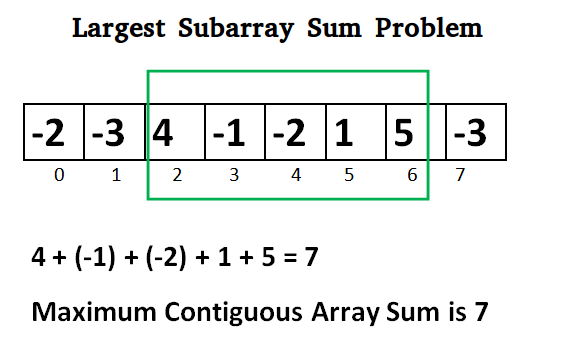# Maximum subarray problem The maximum subarray problem is the task of finding the contiguous subarray within a one-dimensional array, `a[1...n]`, of numbers which has the largest sum, where,   ## Example The list usually contains both positive and negative numbers along with `0`. For example, for the array of values `−2, 1, −3, 4, −1, 2, 1, −5, 4` the contiguous subarray with the largest sum is `4, −1, 2, 1`, with sum `6`. ## References - [Wikipedia](https://en.wikipedia.org/wiki/Maximum_subarray_problem) - [YouTube](https://www.youtube.com/watch?v=ohHWQf1HDfU&list=PLLXdhg_r2hKA7DPDsunoDZ-Z769jWn4R8) - [GeeksForGeeks](https://www.geeksforgeeks.org/largest-sum-contiguous-subarray/)